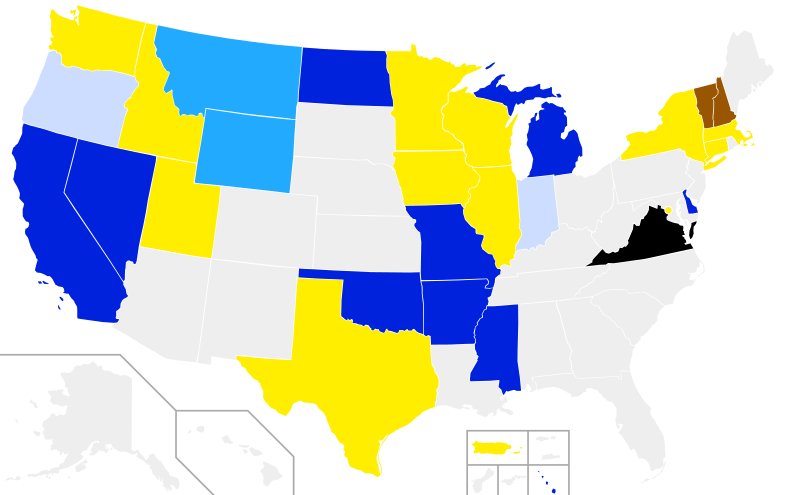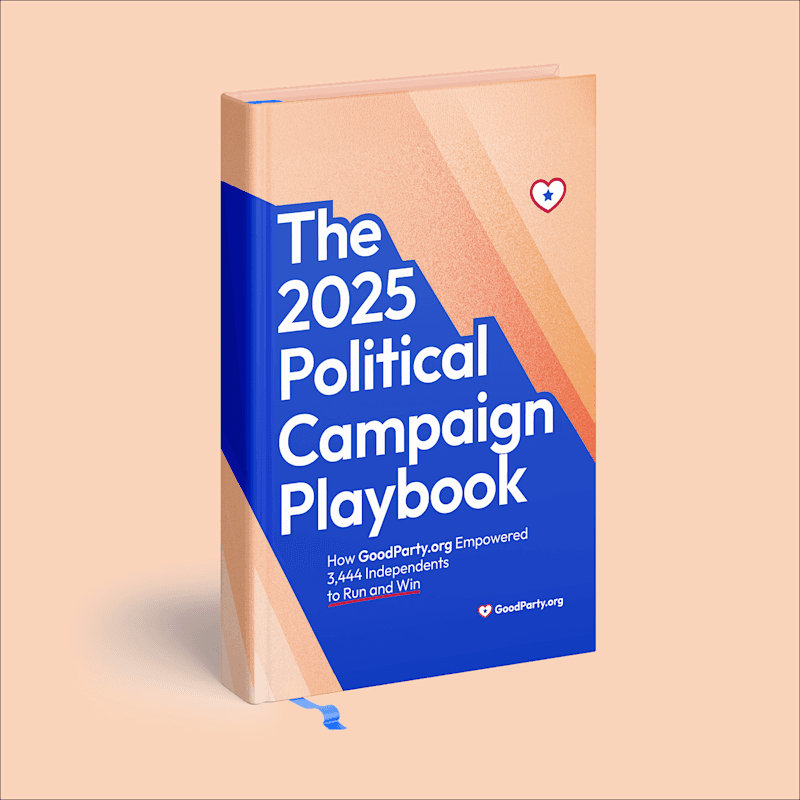
Pros and Cons of Political Term Limits
If you’re reading this article, chances are you’re pretty familiar with the concept of term limits as they apply to political officeholders. Term limits limit the amount of terms that any one individual can serve in public office.
There is a pretty healthy debate, however, around the efficacy and usefulness of term limits, especially for which public offices our current system applies term limits to. In a democracy, does it actually serve the people’s best interest to limit how long specific individuals can serve in public office? Or is it actually anti-democratic to force individuals out of office once they’ve reached an arbitrary time limit?
Let’s get into it.
The History of Term Limits in the Constitution
Before we dig into the specific arguments used both in favor of and against term limits, let’s explore the history of Constitutional term limits and where they originated from.
Most famously, of course, the office of President of the United States is currently limited to a maximum of two four-year terms, as defined by the 22nd Amendment. Before the 22nd Amendment, which was ratified by the states in 1951, the office of President technically didn’t have term limits, as exemplified by Franklin Delano Roosevelt's record-breaking run of being elected President four straight times in a row. After World War II, the 22nd Amendment was officially ratified, enshrining in the Constitution what used to be an informal tradition of presidents serving two terms maximum.
The concern, coming off of FDR dominating four straight elections in a row, was that presidential term limits were needed to prevent the U.S. President from becoming a de facto dictator who could theoretically serve unlimited terms. Indeed, FDR breaking the informal tradition of presidents deciding not to seek a 3rd term was seen as widely controversial at the time, despite FDR easily winning re-election for both a 3rd and 4th time.
It’s notable to mention that the U.S. Constitution itself doesn’t stipulate term limits for any national officeholders – the 22nd Amendment was only ratified in 1951, which means that both Joe Biden and Donald Trump are older than the requirement that U.S. presidents cannot serve a third term. In other words – it’s pretty recent!
This is notable because during the drafting of the Constitution, there was heated debate over whether to explicitly outline term limits or not – and ultimately, when it was initially finalized, the Constitution made no mention of term limits at all. One founding father, the lawyer Rufus King, argued passionately against establishing term limits, remarking that “he who has proved himself to be most fit for an Office, ought not to be excluded by the constitution from holding it.”
King’s view – though ultimately victorious in the end – was not necessarily the consensus among the Founding Fathers as they drafted the Articles of Confederation and later the U.S. Constitution. Future president Thomas F. Jefferson and Founding Father George Mason argued in favor of including strict term limits, with Mason writing that “nothing is so essential to the preservation of a Republican government as a periodic rotation.”
So, right off the bat, there was a very healthy and robust debate over whether the hard inclusion of term limits would ultimately serve or handicap the experiment of Democracy. It’s important to keep in mind that at the time, there were no modern democratic states at all. All world leaders, at the time, were either kings or emperors, ruling for life by autocratic decree until they died, stepped down, or were violently overthrown.
Term Limits by Federal Office
Outside of the office of President, the Constitution to this day doesn’t stipulate term limits for any other national office. That means, currently, those serving in the U.S. House of Representatives or the U.S. Senate can run for, get elected to, and serve an unlimited number of terms. So, for federal offices, only the President of the United States is restricted to serving two full terms. Even the Vice President is constitutionally allowed to serve unlimited terms – although we doubt any single Vice President would want to do so.
In the mid-1990s, Republicans introduced legislation to amend the Constitution by creating term limits for members of Congress – limiting U.S. Senators to serving two six-year terms and limiting Congressional representatives to six two-year terms. However, this attempt failed to reach the ⅔ vote necessary to amend the Constitution, and no major attempts to introduce Congressional term limits has been attempted since. Around the same time as this push for Congressional term limits, the Supreme Court decreed, in a 5-4 decision, that state constitutions did not have the authority to impose term limits on federal officeholders.
And, as many readers will no doubt be aware, there currently exists no term limits or even term definitions for the Supreme Court and other judges within the federal judiciary. Once elected or approved by the Senate, federal judges serve one unbroken term until death or resignation.
Term Limits by State Office
As for state offices, such as Governor, State Representative, etc., the term limits vary by each individual state constitution. Though there are too many specific nuances by office to get into, this graphic does a great job of illustrating which states currently impose term limits on the office of Governor:

In this graphic:
Deep blue states limit their governors to serving two terms maximum for the rest of their lives.
States in sky blue (Montana and Wyoming) limit governors to serving two terms in a 16-year window.
States in light blue (Oregon and Indiana) limit governors to serving two terms within an 8-year window
States in yellow have 4-year terms, but no term limits whatsoever; governors can keep running for re-election indefinitely.
States in brown (Vermont and New Hampshire) have 2-year terms, but no term limits whatsoever
States in gray limit governors to serving two consecutive terms, but governors are eligible to run for office again after four years
States in black (Virginia) limit the governor to one non-consecutive term at a time, but the governor is eligible to run for a second term after four years
To list the specific term limits for other statewide offices by state would simply take far too long, and each term limit by state office has been covered in more extensive detail by publications like Ballotpedia, so check them out for more specific information as it pertains to the rest of statewide and local races.
Arguments in Favor of Term Limits
So, what are the arguments in favor of term limits?
To put it simply, most arguments in favor of term limits are borne out of the idea that they provide a necessary stalwart towards any one individual from accumulating massive power in a democracy. After all, America’s entire founding was on a repudiation of the divine right of English kings to rule for their entire lives. Those who argue in favor of term limits say that such limits are necessary for America to keep its own promise.
Plus, when you factor in all we know about the enormous advantages that incumbent office holders wield when it comes time to being re-elected (remember, Congressional office holders are re-elected to another term around 95% of the time), it can become quite easy to see how a lack of term limits could lead to individuals amassing concentrated power for decades.
Proponents of term limits also point to the concept of “rotation” in a democracy, in which power is shifted to new individuals every set number of years, with the idea being that multiple points of view being expressed through the machinations of political power is a necessary function of democracy – ensuring more people have a chance to rule and influence policy and rebutting the potential for single individuals to entrench their power and influence as long as possible. Proponents would argue that without term limits and without democratic rotation, democracy will become hollowed out at the whim of the individual office holders who cling to power year after year with no meaningful way to switch leadership.
Another salient argument that supporters of term limits use is the issue of urgency. After all, if you know you only have, say, 8 years maximum in office, your term limits should theoretically motivate you to pass as much legislation, or influence as much policy and decision making as possible, during the limited amount of time you have in office. The alternative, proponents would argue, is a non-term limited de facto authoritarian leader who may feel no pressure or urgency to effect any sort of change, because there’s no direct end in sight to their reign of power.
Arguments Against Term Limits
As for the arguments against term-limiting politicians in public office, the central take in opposition is that term limits are simply undemocratic, through and through.
Opponents would argue that term limits exist to arbitrarily kick out public office holders that the public might really approve of and would keep re-electing if they could. Franklin Roosevelt’s untouchable record of winning four presidential elections in a row is a testament to this argument: if the public itself approves of a certain leader and wishes to keep being represented by them, why force them out of service? If a given leader has truly worn out their welcome in the halls of power, opponents say, then the people will elect someone else to succeed them. The ultimate point is that it should be the people who decide when any given politician has outlived their usefulness, not a term limit law.
Another argument that opponents of term limits use is in regards to the corrupting influence of special interests. Opponents argue that term limiting members of Congress would actually serve to drive representatives directly into the hands of lobbyists and special interests because, in the words of the Brookings Institute, “novice legislators will look to fill their own informational and policy gaps by an increased reliance on special interests and lobbyists.”
Put another way, term limiting federal Congressional representatives would mean that our leaders wouldn’t have the requisite time in office to figure out how to effectively maneuver the levers of government in order to successfully pass legislation, and in the void left behind by their lack of experience and expertise, special interests and corporate lobbyists would step in to exert even more influence on Congressional outcomes.
Such term limits would also feed into the “revolving door” problem, in which former government leaders find high-profile jobs in the private sector that they were formerly tasked with regulating, and back and forth. Hard term limits, such opponents argue, would drastically increase the amount of former federal office holders who seek employment at the firms and industries that the federal government actively seeks to regulate, and with their knowledge of federal government, would be able to help such private sector special interests avoid government oversight.
An Ongoing Debate
When it comes to the issue of term limits, there are no hard answers right or wrong. Democracy is an ever-evolving experiment, with some public offices implementing term limits and others going without them. It’s impossible to say whether any individual office’s term limit, or lack thereof, contributes to a “more democratic” outcome, or an outcome that voters would be more approving of. While it may be a beneficial idea to support term limits when it comes to specific offices, such as the Supreme Court, there’s definitely lots of room for both proponents and opponents of term limits to have their voices heard.
It ultimately comes down to specific offices and the specific constituencies that elect a leader to such office that make the determination on whether term limits make sense or not. And as we’ve seen throughout history, just because a given term limit may or may not exist in the present doesn’t mean they can’t be introduced – or taken away – at a later time.
If issues surrounding the fairness of democracy and the robustness of our political system interest you, consider signing up for GoodParty.org’s newsletter. GoodParty.org advocates for electoral and political reforms that lead to more representation by independent politicians outside of the two party system, including potential term limit reforms as well. Check out our newsletter here for more information and to get involved.
Photo Credit: Jeremy Lishner

